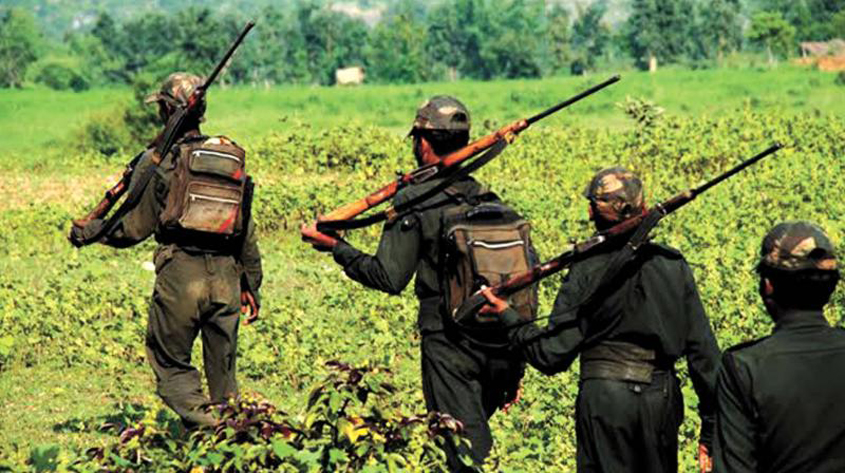In information available exclusively to this newspaper, Maoists’ top leader Ganapathi, alias Muppala Lakshman Rao, who is in his early 70s may step down and hand over the outfit’s charge to 61-year-old Namballa Keshava Rao, alias Ganganna. Sources in the counter-intelligence (CI) wing in Telangana police said the development follows the problem of cash shortage which the Maoists have been facing post Demonetization.
The Maoist network, which includes a multi-layered cadre of around 7,000 full-timers from around nine states in the country, require a huge regular fund flow to sustain its day-to-day operations and pay allowances to the militants. Though exact estimates are not available, the cops who specialise on the Maoists say that the Demonetization has shrunken their revenues by one third to 50%.
At a time when the impacts of Demonetization is being fiercely debated in the country, the left wing extremist activities have certainly come down due to the note ban. This was seconded by an official in the CI which once solely focused on the Maoist violence in undivided Andhra Pradesh.
The information on Maoists planning a change of guard came through documents of the fifth central committee (CC) meeting held in Chhattisgarh-Telangana borders in February 2017. The documents, which reached the police in Hyderabad two months ago, speak of the impact of Demonetization on the ultras. The fourth CC meeting was held in 2013.
A key document titled “Mission 2017” mentioned the losses inflicted on the Maoists in the last four years. The party lost as many as 720 militants at all levels, the document said. Of them, 423 were from Chhattisgarh and Odisha while 79 were from Andhra-Odisha border committee, 33 from Telangana and six from Andhra Pradesh. The maximum number of deaths took place after 2014.
Ganapathi, considered to be a soft spoken but hardcore ideologist, has been the general secretary of the Maoists since the formation of a unified party in 2004. The Maoists have been formed by the merger of CPI (ML) People’s War and Bihar based Maoists Communist Centre (MCC). Now the Maoists have a 14-member Politburo and a central committee with 32 members.
Ganapathi has been the general secretary of Peoples’ War for about 12 years since early 1990s and was instrumental in turning the outfit from a bunch of elementary armed squads to soon-to-be People’s Liberation Guerilla Army (PLGA).
Ganapathi is from a village, Birpur in Jagital district of Telangana while Keshava Rao is from Srikakulam district in AP. Ganapathi, who is well-respected among the ML groups across India and Nepal, is likely to continue in the party as a guiding force. Keshava Rao, who carries a cash reward of Rs 10 lakh on his head, is a most-wanted militant as declared by the National Investigation Agency.
Earlier, the local armed squads used to depend on the local sources for their monetary needs and raise funds from local contractors and sympathisers.
But, after the formation of PLGA, the needs of Maoists have gone up and they need centralised funding for various things, like the militants maintenance and supply of uniform weapons, a senior retired police officer told this newspaper on the condition of anonymity. As per this official, who gained reputation as an expert on Maoists, keeping up their finances has become a big challenge to the ultras now.
Most of the funds to the Maoists came from businessmen, contractors in forest areas of Chhattisgarh, Odisha and Jharkhand. The sources of funding at the Andhra-Odisha border and the northern tips of Telangana are still there, but they have become meagre, said the cops. The Demonetization, followed by public works being brought to the ambit of GST, has tightened cash availability with these contractors and businessmen.

